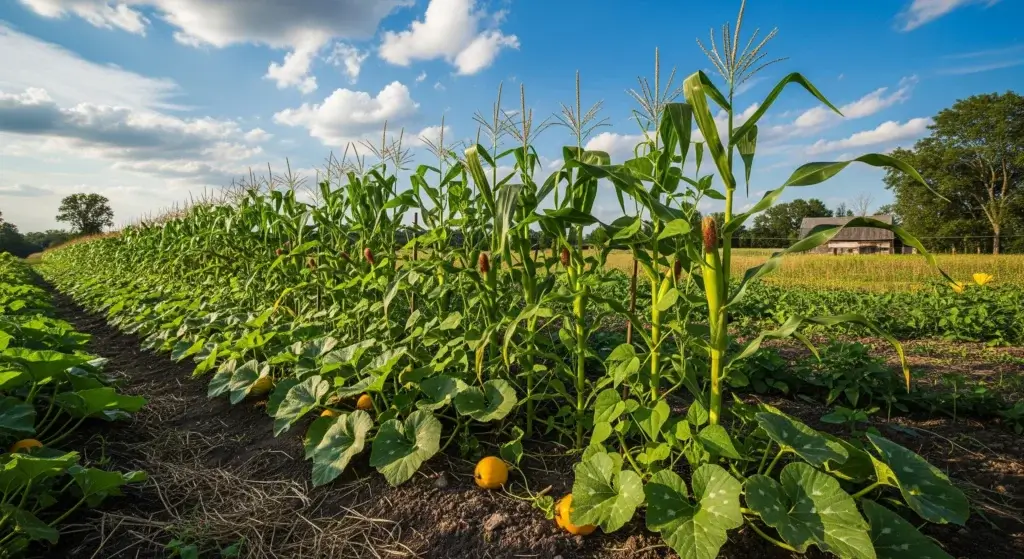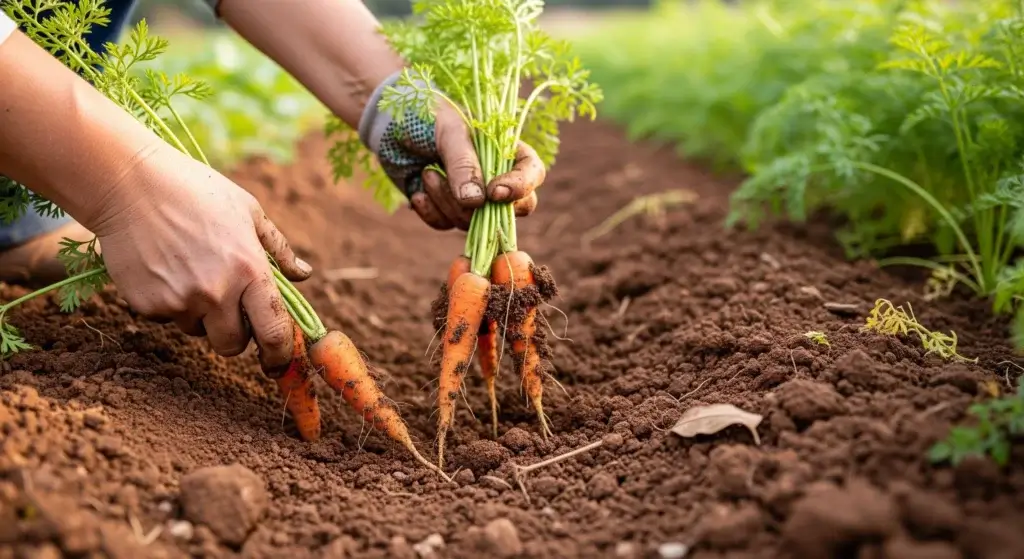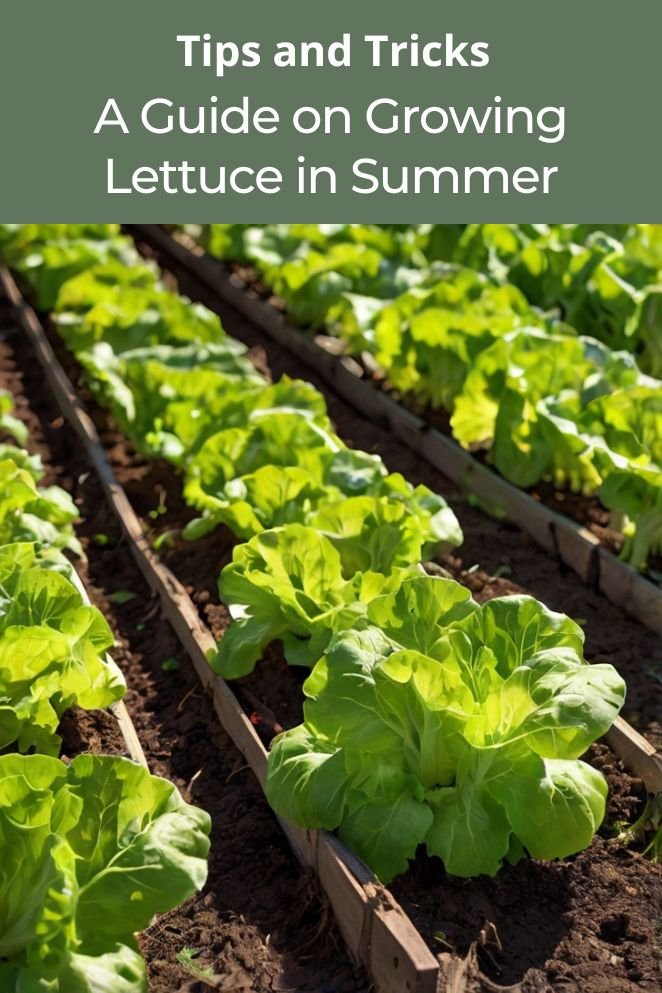
Growing lettuce in the summer can be a rewarding experience, but it comes with its own set of challenges.
Lettuce is typically a cool-weather crop, so the hot summer months can cause it to bolt or become bitter.
However, with the right techniques and care, you can enjoy fresh, crisp lettuce even during the hottest part of the year.
In this article, we’ll explore how to choose the right lettuce varieties, create ideal growing conditions, plant and space your lettuce, maintain your crop, and extend your harvest.
Choosing the Right Lettuce Varieties
Selecting the right lettuce varieties is crucial for summer growing.
Some varieties are more heat-tolerant than others, making them better suited for warmer temperatures.
Butterhead lettuce
Butterhead lettuces are known for their tender, flavorful leaves and good heat tolerance.
Varieties such as ‘Buttercrunch’ and ‘Sierra’ are particularly well-suited for summer growing.
These varieties are less likely to bolt—an issue where lettuce goes to seed prematurely when exposed to heat.
This means they can continue to grow and produce high-quality leaves even during hot weather.
Romaine lettuce
Romaine lettuce is a sturdy choice for warmer temperatures.
Varieties like ‘Jericho’ and ‘Parris Island Cos’ are specifically bred to withstand heat better than other types of lettuce.
They have a crisp texture and robust flavor, making them a favorite for salads.
Their heat tolerance helps them stay fresh and crunchy even when temperatures rise.
Loose leaf lettuce
Loose leaf lettuce varieties are versatile and can handle heat quite well.
Varieties such as ‘Black Seeded Simpson’ and ‘Oakleaf’ are known for their adaptability to warmer conditions.
These lettuces are harvested over a longer period, as they continuously produce new leaves.
This makes them a good option for extended harvests throughout the summer.
Batavian lettuce
Also known as summer crisp lettuce, Batavian varieties combine the desirable traits of crisphead and loose leaf lettuces.
They offer a crunchy texture and a good tolerance to heat. Popular heat-tolerant varieties include ‘Nevada’ and ‘Magenta.’
These lettuces are a great choice for summer gardens because they can withstand higher temperatures while still providing a satisfying crunch.

Ideal Growing Conditions
To grow healthy lettuce during the summer, it’s important to create the right conditions.
Here’s a detailed guide on how to achieve this:
Shade
Lettuce prefers cooler temperatures and can struggle with intense summer heat.
To protect your lettuce from the harsh midday sun, provide some shade.
You can use shade cloths, which are special materials that filter sunlight and reduce heat or plant your lettuce in areas that get partial shade during the hottest part of the day.
This helps prevent the lettuce from wilting or bolting due to excessive heat.
Soil
Lettuce grows best in well-drained, fertile soil.
The ideal pH for lettuce is between 6.0 and 6.8, which is slightly acidic to neutral.
To ensure your soil is in good shape, mix in compost.
Compost improves soil structure, helps retain moisture, and adds essential nutrients that promote healthy lettuce growth.
Well-drained soil prevents water from pooling around the roots, which can lead to rot.
Water
Lettuce has shallow roots, so it relies on consistent moisture to stay healthy.
Regular watering is essential to keep the soil from drying out.
Drip irrigation or soaker hoses are effective tools for maintaining steady soil moisture.
These systems deliver water directly to the soil, reducing the risk of overwatering and ensuring that the lettuce gets just the right amount of water.
It’s important to monitor the soil moisture and adjust watering as needed to keep it consistently moist.
Temperature
Lettuce thrives in cooler temperatures, ideally between 60-70°F (15-21°C).
While some heat tolerance exists, maintaining this temperature range helps ensure optimal growth.
Using mulch can be beneficial in this regard.
Mulch is a layer of organic material, like straw or grass clippings, placed on the soil surface.
It helps keep the soil cool and moist by shading the soil and reducing evaporation.
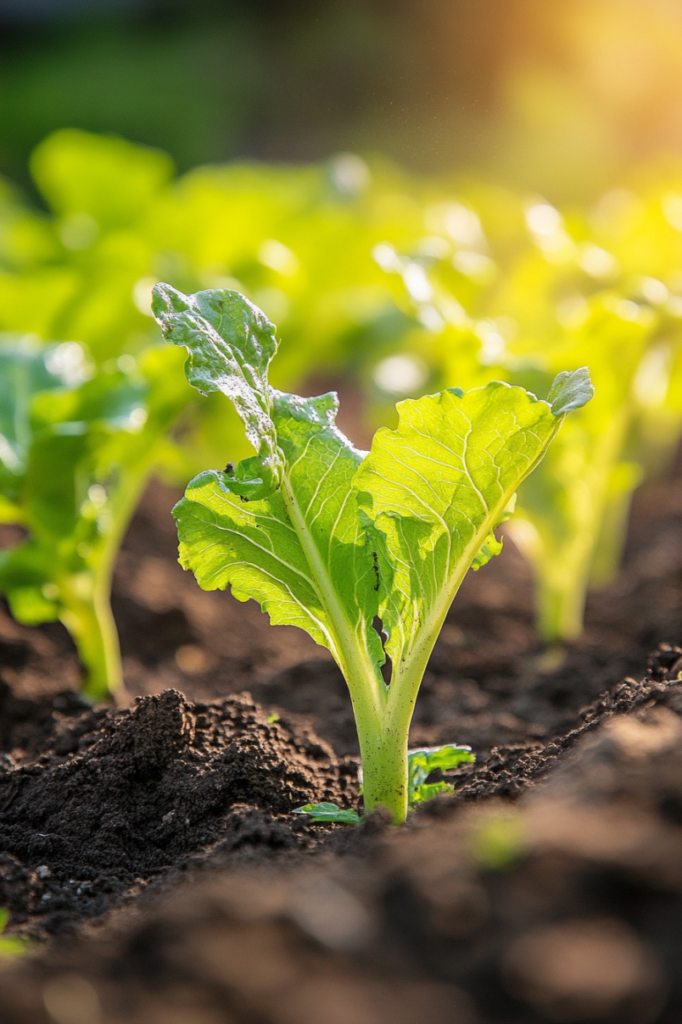
Planting and Spacing
Proper planting and spacing can make a significant difference in the health and productivity of your lettuce plants.
Seed starting
Starting lettuce seeds can be done in two main ways:
Indoors
Begin by sowing seeds indoors if you want to get a head start on the growing season.
Use seed trays or small pots filled with seed-starting mix.
Once the seedlings have grown and developed at least two true leaves (the first set of leaves after the initial seed leaves), they’re ready to be transplanted into the garden.
This method gives your lettuce a jump starts and can be especially useful in cooler climates.
Direct sowing
Alternatively, you can sow seeds directly into the garden soil.
This is often done when the soil temperature is warm enough for germination.
Simply scatter the seeds on the soil surface and cover them lightly with soil.
Direct sowing is convenient and allows the lettuce to grow in its final location from the start.
Spacing
Proper spacing is crucial for lettuce health and productivity. Space your lettuce plants about 6-12 inches apart, depending on the variety:
- Leaf lettuces: These can be planted closer together, around 6-8 inches apart, because they don’t grow as large.
- Head lettuces: Varieties that form heads, like Butterhead or Romaine, need more room, so space them about 10-12 inches apart.
Succession planting
To ensure you have a steady supply of fresh lettuce throughout the summer, practice succession planting.
This involves planting new seeds every two weeks. Here’s how it works:
- Planting schedule: Start by planting a batch of seeds, and then plant another batch two weeks later. Continue this schedule throughout the growing season.
- Continuous harvest: As the first batch of lettuce matures and is ready for harvest, the next batch will be growing and approaching maturity.
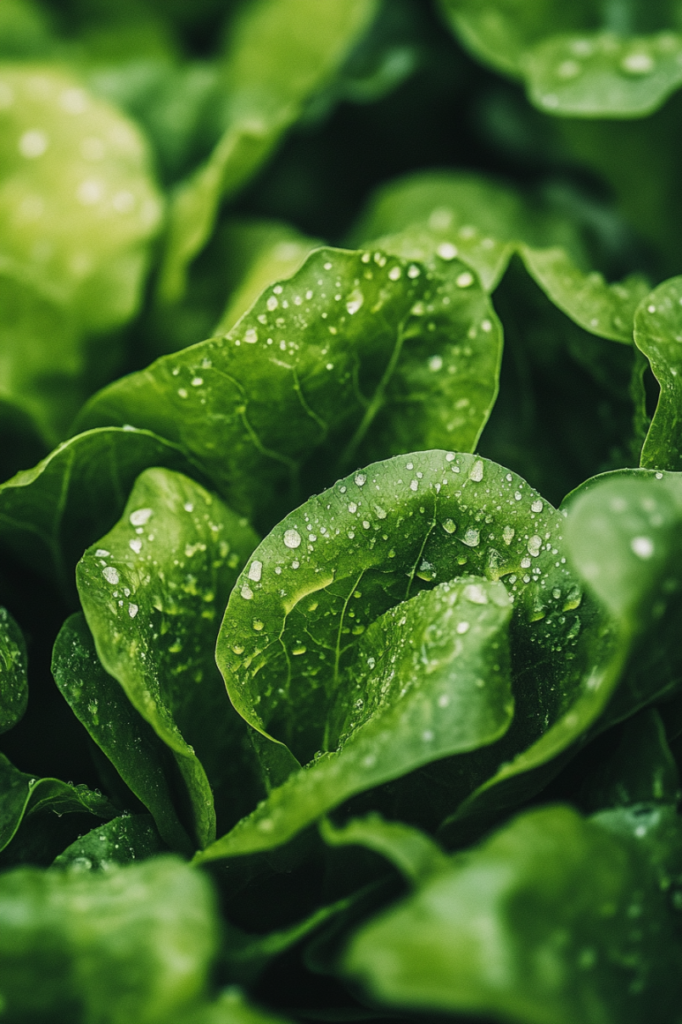
Care and Maintenance
Taking good care of your lettuce plants ensures they stay healthy and productive.
Weeding
Weeds can be a significant problem for lettuce plants because they compete for water and nutrients.
To keep your lettuce thriving:
- Regular weeding: Regularly remove weeds from the garden bed to ensure that your lettuce has access to the resources it needs.
- Mulching: It suppresses weed growth by blocking sunlight and helps keep the soil moist by reducing evaporation. This can also help maintain a consistent soil temperature.
Fertilization
Lettuce plants need a good supply of nutrients to grow well because they are heavy feeders:
- Balanced fertilizer: A balanced fertilizer has equal proportions of nitrogen (N), phosphorus (P), and potassium (K), which support overall plant health.
- Feeding schedule: Apply the fertilizer every two weeks to ensure your lettuce gets the nutrients it needs throughout its growth.
Pest control
Lettuce can attract a range of pests, including:
- Aphids: These tiny insects can suck sap from the lettuce leaves, causing them to curl and distort.
- Slugs and snails: These pests chew holes in the leaves, leaving unsightly damage.
To manage pests effectively
- Beneficial insects: Introduce natural predators like ladybugs, which feed on aphids.
- Organic pesticides: Use natural or organic pesticides if necessary, following the instructions carefully to avoid harming beneficial insects.
- Traps: Set up traps for slugs and snails, such as beer traps or copper barriers, which can deter them from feeding on your lettuce.
Bolting prevention
Bolting is when lettuce plants start to flower and produce seeds, which makes the leaves taste bitter and tough.
To prevent bolting:
- Heat-resistant varieties: Choose lettuce varieties that are known to be more resistant to heat, which can reduce the risk of bolting.
- Provide shade: Use shade cloths or plant your lettuce in a location that provides some relief from the intense midday sun.
- Consistent moisture: Lettuce plants are sensitive to fluctuations in water supply, and dry conditions can trigger bolting.
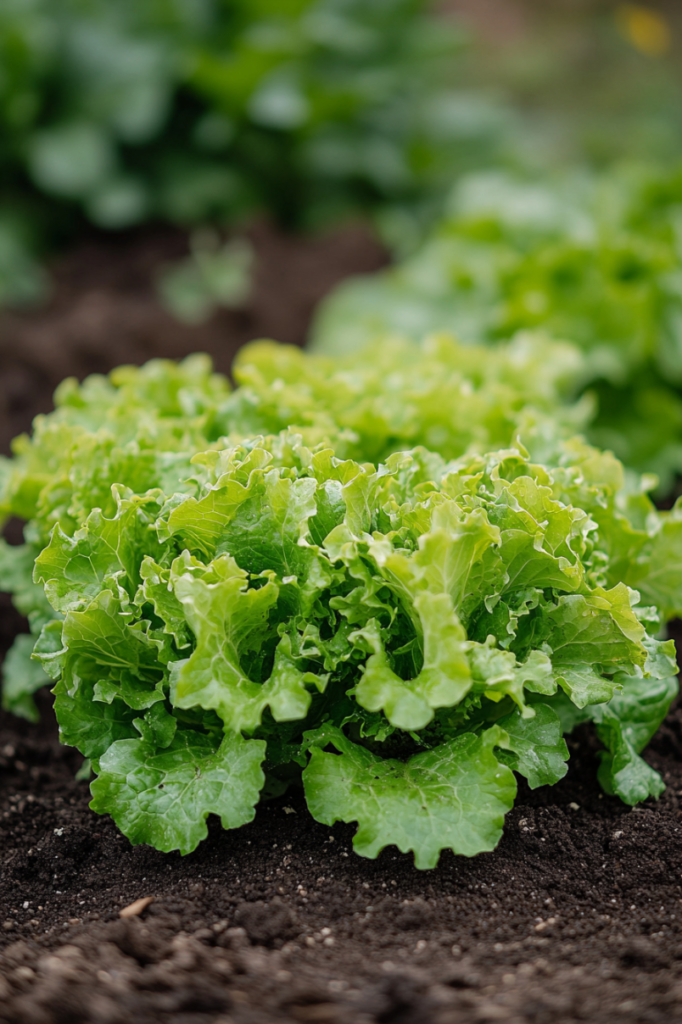
Tips for Extending the Harvest
To keep enjoying fresh lettuce for as long as possible, here are some helpful tips for extending your harvest:
Harvesting
The best time to harvest lettuce is in the morning when it’s crisp and full of moisture.
For leaf lettuce, you can pick the outer leaves as needed, leaving the inner leaves to continue growing.
This way, you’ll have a steady supply of fresh greens.
For head lettuce, wait until the entire head is mature, then cut it off at the base.
Be sure to harvest before the plant bolts, or starts producing flowers, as this makes the leaves bitter and less enjoyable.
Staggered planting
To ensure a continuous supply of lettuce, plant it in stages.
For example, start new seeds or seedlings every couple of weeks.
This way, while one batch is being harvested, another is growing and maturing.
Staggered planting helps manage space and resources more effectively, so you always have some lettuce ready to pick.
Hydroponics
Another effective method for extending your lettuce harvest is growing it hydroponically.
This involves growing plants in a nutrient-rich water solution instead of soil.
Hydroponic systems allow you to control growing conditions, like light, temperature, and nutrients, very precisely.
This method is ideal for year-round growing, as it creates a stable environment that isn’t affected by outdoor weather changes.
Conclusion
Growing lettuce in the summer requires some extra effort, but the rewards are worth it.
By choosing the right varieties, creating ideal growing conditions, planting and spacing correctly, and maintaining your plants diligently, you can enjoy fresh, homegrown lettuce throughout the hottest months.
With these tips and techniques, you’ll be well on your way to a bountiful summer lettuce harvest.

